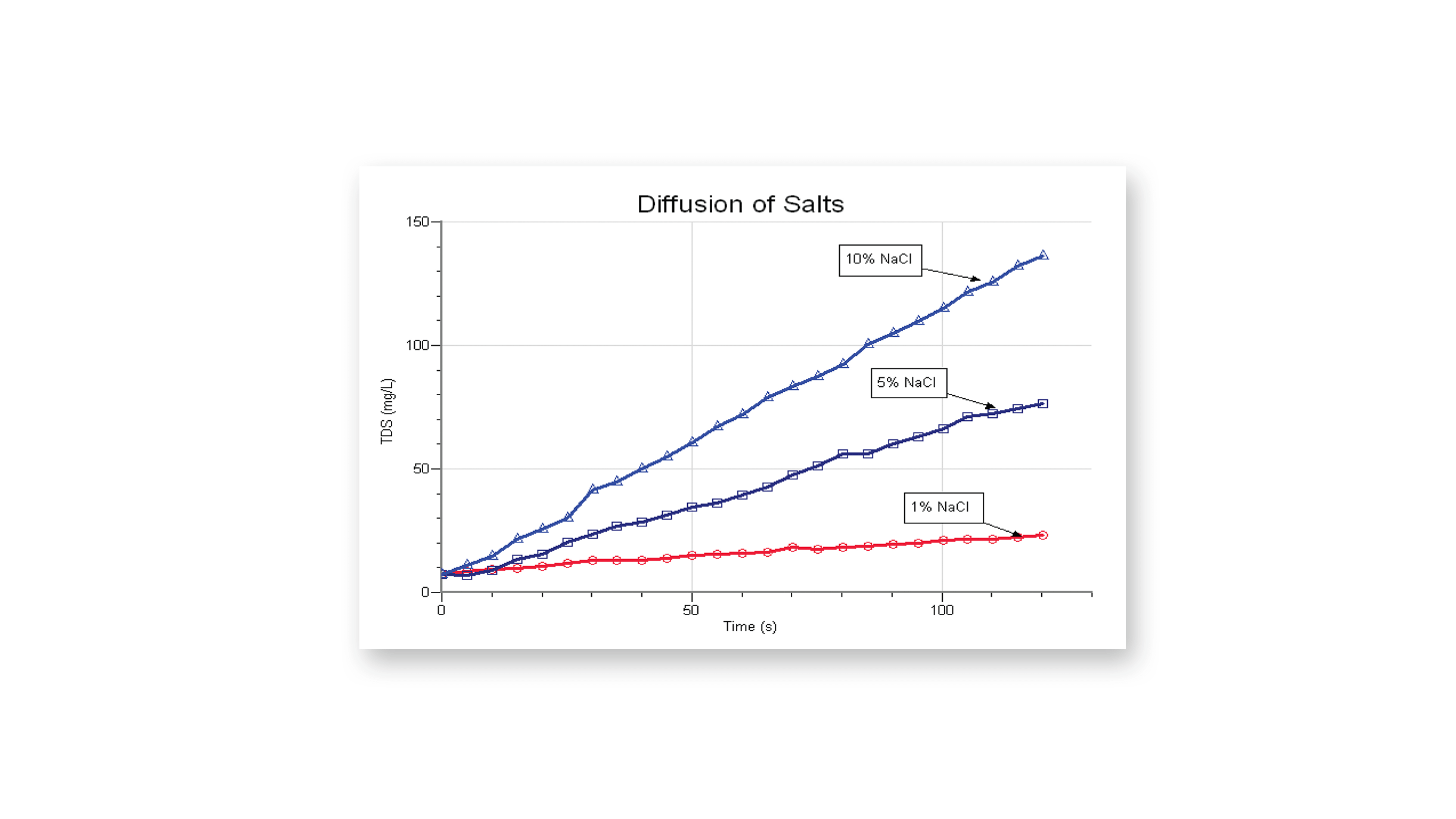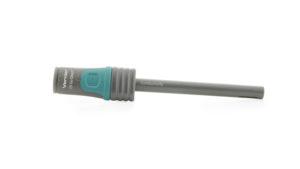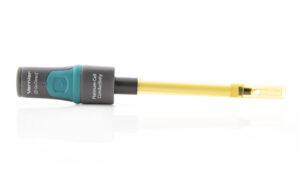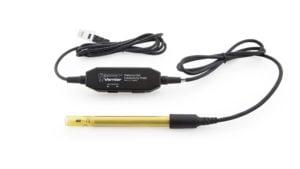The Conductivity Probe has three ranges, providing optimal precision in any given range. Biology teachers can use this probe to demonstrate diffusion of ions through membranes. Chemistry students are able to quickly investigate the difference between ionic and molecular compounds, strong and weak acids, or ionic compounds that yield different ratios of ions. Environmental science students use it to measure TDS, total dissolved solids.






